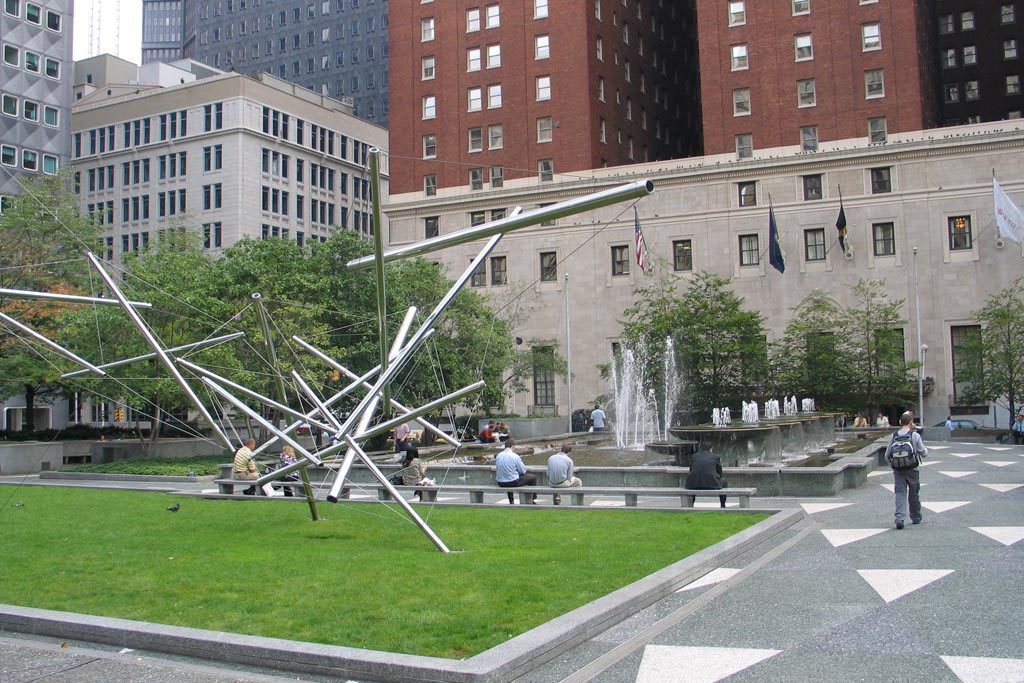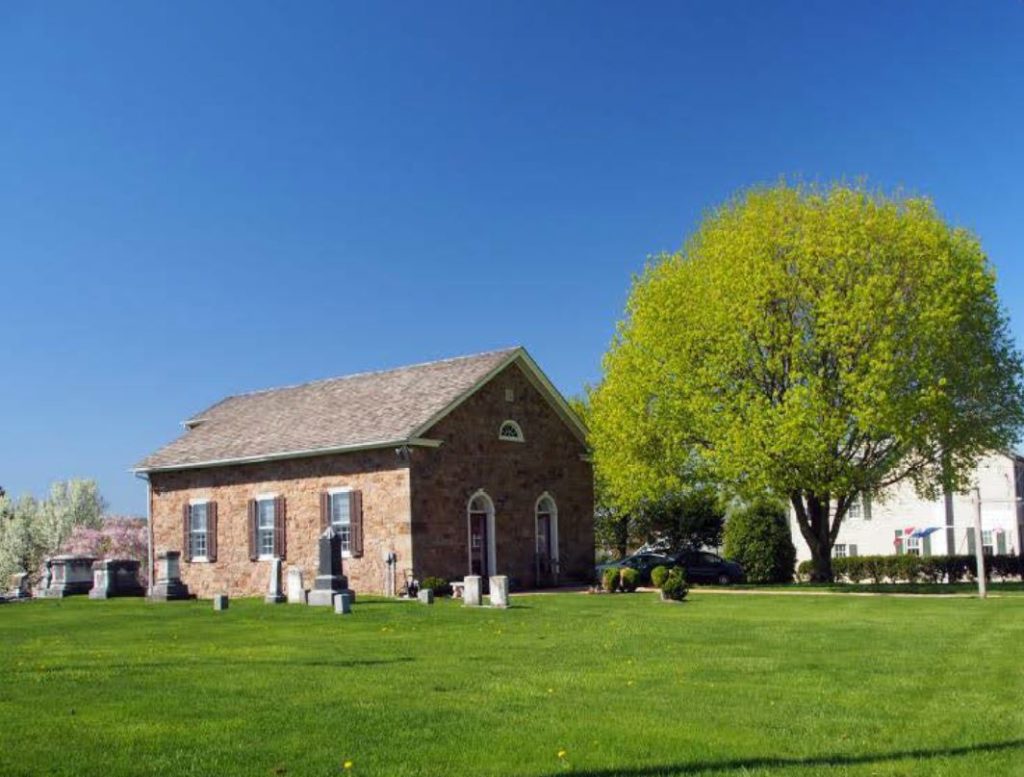June… school’s out, summer officially arrives, vacations galore, and lots of great preservation work going on. I myself just got back from a nice long weekend in the PA Wilds, and they deserve a Shout Out for the amazing work they’re doing to promote the natural and historical wonders of this region. I didn’t want to come home from the quaint cottage we stayed in along Pine Creek but I knew you’d all be waiting for this month’s Shout Out and I didn’t want to disappoint.
First, some archaeology news…
I recently read about this interesting project at Camp Michaux in the Michaux State Forest in Cumberland County and thought it deserved a Shout-Out. Camp Michaux is on South Mountain along the Appalachian Trail and was determined eligible for listing in the National Register of Historic Places in 2009. An Indiana University of Pennsylvania archaeology student working on her Master’s degree is currently conducting some archaeological survey work at the site of the former World War II Pine Grove Furnace POW camp. This specialized interrogation camp for high-profile POWs was built in 1933 as a Civilian Conservation Corps (CCC) camp before WWII and as a church camp after the war. The PA Dept of Conservation and Natural Resources (DCNR) and PHMC worked together to issue the necessary permits for this study, which will send new light on an under-studied area of WWII. Thank you for this great work!
![One of PHMC's state historical markers at Camp Michaux. November 2014. By Jumpmaster1906 (Own work) [CC BY-SA 4.0 (http://creativecommons.org/licenses/by-sa/4.0)], via Wikimedia Commons.](https://pahistoricpreservation.com/wp-content/uploads/2016/06/Secret_WW2_Enemy_Prisoner_of_War_Camp_on_U_S__Soil.jpg)
One of PHMC’s state historical markers at Camp Michaux. November 2014. By Jumpmaster1906 (Own work) [CC BY-SA 4.0 (http://creativecommons.org/licenses/by-sa/4.0)], via Wikimedia Commons.
We’ve just recently learned that two projects in Pennsylvania are recipients of the National Park Service’s Maritime Heritage Grants Program for the 2015 federal fiscal year. In this round, 34 grants in 19 states at a total of $2,580,197.37 were awarded to a variety of projects that range from underwater archaeology to preservation to maritime education. PHMC, with help from PA SHPO, administers these grants in Pennsylvania.
- The Philadelphia Ship Preservation Guild was awarded $100,088 for the restoration of the Boat Deck and Hull on the 1902 Tug named Jupiter. This 113-yr old continuously operating vessel will have the deck replaced and be dry docked as a step toward making the Jupiter more accessible.
- For those who find submarines more interesting, the Independence Seaport Museum will be using their $50,000 grant to support the development, publication, and management of a new mobile app that will “immerse” in the history of the Submarine Becuna and those who served on it from the mid-1940s through the late 1960s.

The USS Becuna was listed in the National Register of Historic Places in 1978.
Meanwhile, out in Pittsburgh…
A Shout-Out goes to Pittsburgh Park Conservancy and Pittsburgh’s Mellon Square, which was one of four national winners for Docomomo’s 2016 Modernism in America Design Award of Excellence. Other winners of this year’s top honor are the Golden State Mutual Life Insurance Building (Los Angeles, CA), Frederick and Harriet Rauh Residence (Cincinnati, OH), and the Michigan Modern.

Mellon Square from the Pittsburgh Central Downtown Historic District nomination. Photo by Pittsburgh History and Landmarks Foundation, October 2006.
Cited in the Civic/Institutional category, Mellon Square was designed by architects Mitchell & Ritchey and landscape architects Simonds & Simonds and opened in 1955 as the country’s first urban park designed with an integral underground garage to support the surrounding office buildings. After decades of decline, the Pittsburgh Parks Conservancy headed a team to prepare a preservation and management plan to guide the years-long, $10 million dollar rehabilitation of the park features and landscape. Congrats to the entire team!
Mellon Square is a contributing site in the Pittsburgh Downtown Central Historic District, which was expanded and updated in 2012 (Key #156803). It is not only an amazing mid-century modern property on its own, but it’s also part of one of the best urban spaces in Pennsylvania. The Omni-William Penn hotel (the former Alcoa world headquarters building), Osterling’s Union Trust Building, the underappreciated former US Steel/Mellon Bank Building, the former Gimbel’s Department Store (now Heinz 57 Building), the Beaux Art James Reed Building, and Daniel Burnham’s Oliver Building all border the Square itself. Together, these places represent some of the best commercial architecture and urban planning trends of the first 60 years of the 20th century. And, I’m also happy to report that five of the buildings I just listed are former or on-going Rehabilitation Investment Tax Credit projects.
Feeling proud about their National Register listings…
The Caernarvon Historical Society in Churchtown, Lancaster County held a special plaque dedication event on June 5th to celebrate the recent listing of the Caernarvon Presbyterian Church (Key #070878) in the National Register of Historic Places. This small 1834 church, now the headquarters for the historical society, was built adjacent to an existing burial ground on the land owned by local ironmaster, Robert Jenkins. The exterior of the church is a colorful patchwork of limestone, ironstone, sandstone, and fieldstone and the interior features ten rows of wood pews, thick plaster walls, and the original oil chandelier. It was used by the local Presbyterian community until 1870, after which it was rented to other local denominations.

Caernarvon Presbyterian Church, April 2015. Photo by David Maher/PHMC.
In Montgomery County, officials from Hatfield Borough were unveiled a plaque for the recently-listed borough electric substation, lock-up, and firehouse (Key #201051). The plaque and ribbon cutting at the building was a highlight at this year’s Founder’s Day festival that celebrates the early days and history of Hatfield. Borough officials and the Hatfield History Museum have been working for several years to list the property, built in 1908 to supply residents with electricity from nearby Souderton Borough in the National Register. Eventually the small, one-story, square brick building housed the Borough’s one jail cell and provided a home to the first fire truck until 1925. The building is listed under Criterion A for its association with the development of municipal electric service in suburban Philadelphia and played an important multi-functional role in the community.

Hatfield Borough Substation, Lock up, and Firehouse photo from National Register nomination. Photo by David Kimmerly, 2014.
Just a quick note about the National Register plaques… the PA SHPO and the National Park Service do not provide plaques for properties listed in the National Register. If you’re interested in a plaque, please check out this FAQ for more information.
That’s it for this month, folks. As always, my last SHPO Shout-Out is to thank you for all the good work you do every day to preserve, protect, and promote our historic places!
P.S.
If you or your friends and colleagues are involved in or hear about great preservation happening in Pennsylvania,
please email me at ssplain@pa.gov with your suggestions! While I can’t promise that it will get covered in the monthly Shout-Out, I can promise that we’ll add it to our growing list of great preservation work happening across Pennsylvania. Thanks!
Comment Policy
PHMC welcomes and encourages topic-related comments on this blog. PHMC reserves the right to remove comments that in PHMC’s discretion do not follow participation guidelines.
Commenters and Comments shall be related to the blog post topic and respectful of others who use this site.
Commenters and Comments shall not: use language that is offensive, inflammatory or provocative (this includes, but is not limited to, using profanity, obscene, or vulgar comments); disparage other commenters or people; condone illegal activity; identify the location of known or suspected archeological sites; post personal information in comments such as addresses, phone numbers, e-mail addresses or other contact details, which may relate to you or other individuals; impersonate or falsely claim to represent a person or an organization; make any commercial endorsement or promotion of any product, service or publication.
If you would like to comment on other topics not related to this blog post but related to PHMC, please fill out the PHMC Contact Us Form.

Leave a Reply